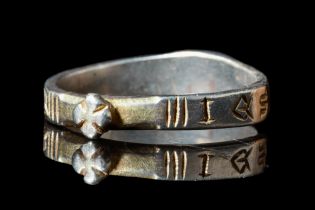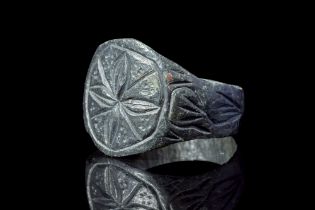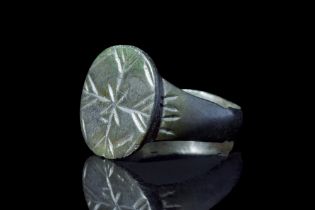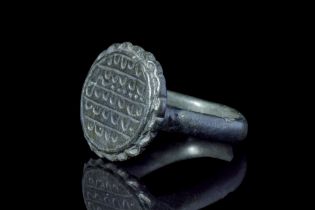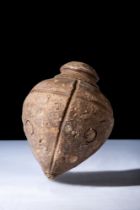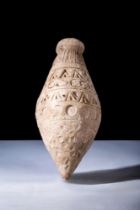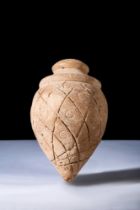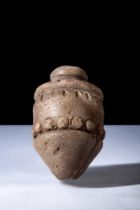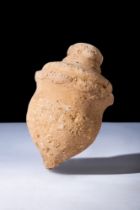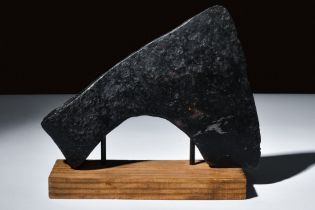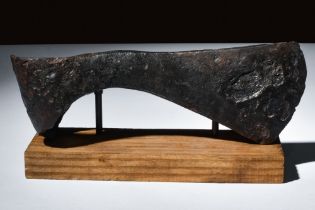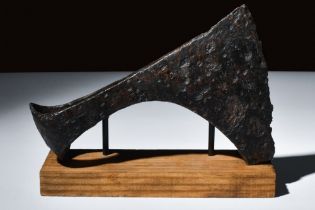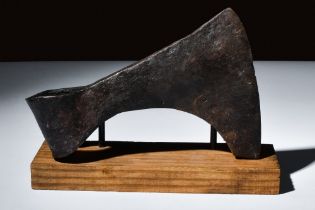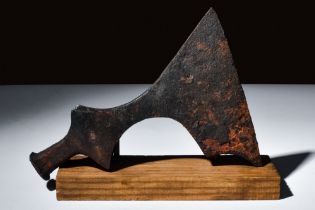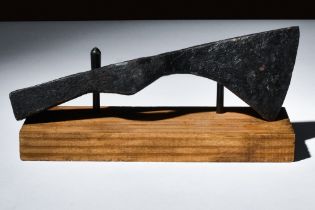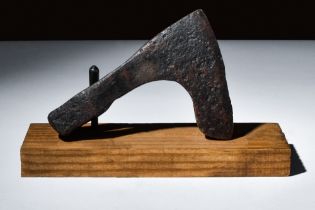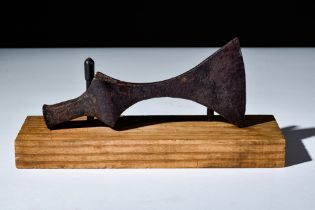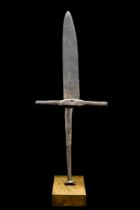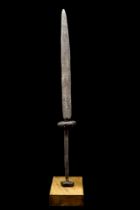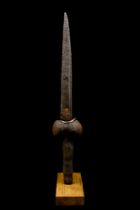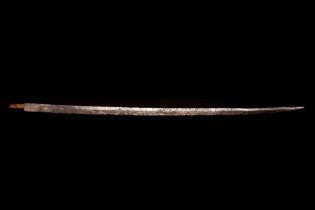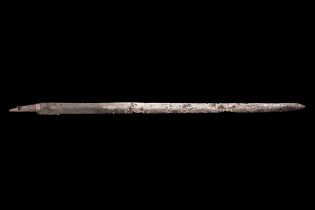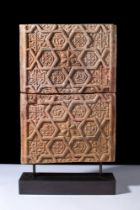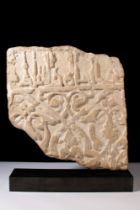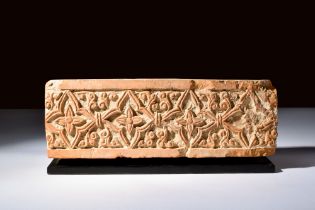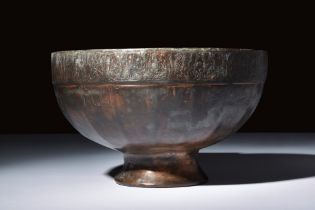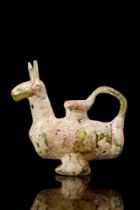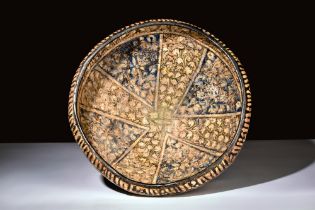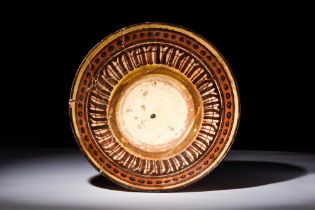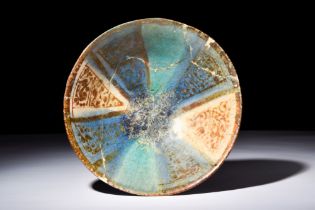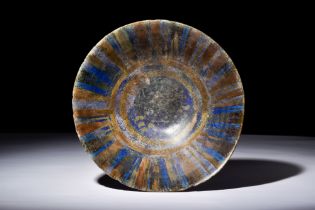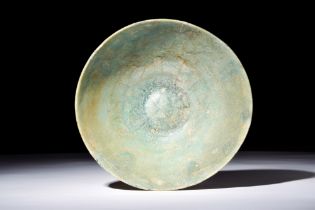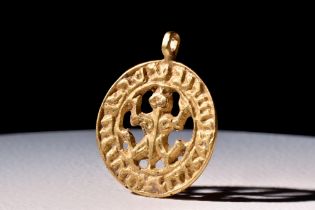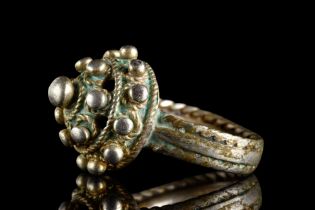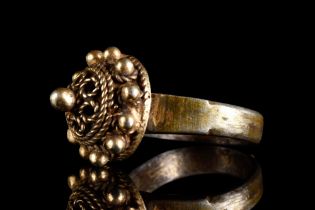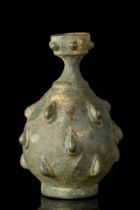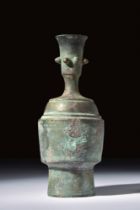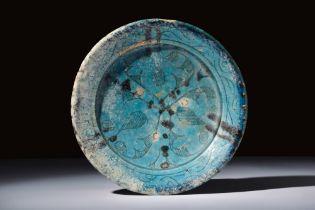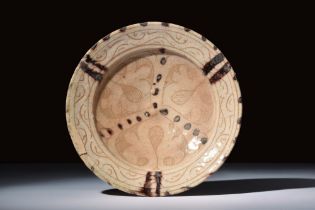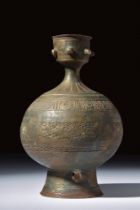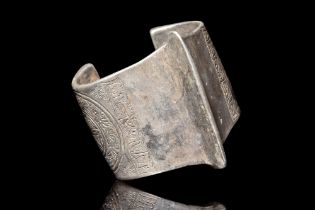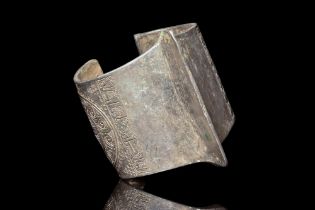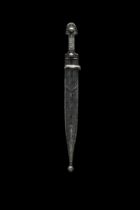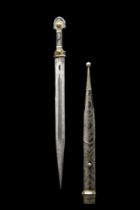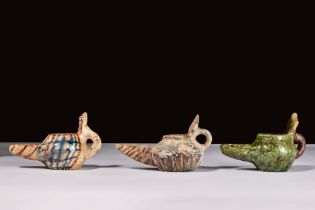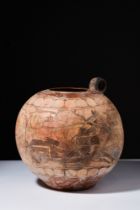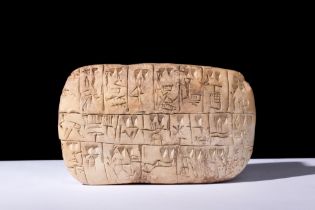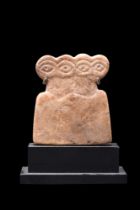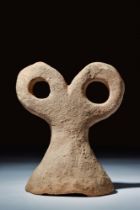Verfeinern Sie Ihre Suche
Schätzpreis
Kategorie
- Schmuck (89)
- Griechische, Römische, Ägyptische & andere Antiquitäten (84)
- Waffen, Rüstungen & Militaria (52)
- Skulpturen (42)
- China (34)
- Keramik, Fayencen (30)
- Glas & Kristall (29)
- Historische Baustoffe & Elemente (23)
- Großuhren (22)
- Bücher, Manuskripte & Schriften (18)
- Varia (14)
- Metalle (8)
- Islam (7)
- Präparate & Naturkundliches (6)
- Wissenschaftliche Instrumente (6)
- Vintage Fashion (5)
- Silber & Versilbertes (4)
- Ethnographie & Stammeskunst (3)
- Küchenutensilien (3)
- Münzen (3)
- Spielzeug, Modelle & Puppen (3)
- Sport Memorabilia & Equipment (3)
- Lampen (2)
- Oldtimer, Motorräder & Automobile (2)
- Porzellan (2)
- Textilien (2)
- Druckgrafiken & Multiples (1)
- Indien (1)
- Möbel (1)
- Werkzeug (1)
- Zeichnungen & Pastelle (1)
Künstler / Marke
Lostyp
- Ring (54)
- Bowl (22)
- Gold Ring (22)
- Anhänger (22)
- Figure (18)
- Intaglio (18)
- Schwert (18)
- Vessel (17)
- Halskette (16)
- Gold Pendant (15)
- Axe (14)
- Beads (12)
- Silver Ring (12)
- Round (10)
- Amulet (9)
- Band (9)
- Garnet (8)
- Scarab (8)
- Helme (7)
- Dagger (6)
- Flask (6)
- Plate (6)
- Speer (6)
- Bottle (5)
- Buddha (5)
- Bust (5)
- Becher (5)
- Figurine (5)
- Grenade (5)
- Jar (5)
- Krater (5)
- Ohrringe (4)
- Glass Bottle (4)
- Jug (4)
- Mask (4)
- Skyphos (4)
- Spearhead (4)
- Bracelet (3)
- Brooch (3)
- Chain (3)
- Chain Necklace (3)
- Messer (3)
- Lampe (3)
- Shabti (3)
- Terracotta Figure (3)
- Amphora (2)
- Armour (2)
- Beaker (2)
- Brooches (2)
- Button (2)
- Cameo (2)
- Kerzeleuchter (2)
- Gericht (2)
- Emerald (2)
- Flares (2)
- Gemstone (2)
- Glass Candlestick (2)
- Glassware (2)
- Kantharos (2)
- Kyathos (2)
- Paramerion� (2)
- Patera (2)
- Perlen (2)
- Perfume Bottle (2)
- Phiale (2)
- Scabbard (2)
- Ushabti (2)
- Vase (2)
- Adze (1)
- Blunt (1)
- Bridge (1)
- Carving (1)
- Chalice (1)
- Truhe (1)
- Cloisonne (1)
- Club (1)
- Säule (1)
- Corinthian Helmet (1)
- Cups (1)
- Tür (1)
- Falcata (1)
- Glass Jug (1)
- Glass Plate (1)
- Gold Bar (1)
- Knives (1)
- Brief (1)
- Lintel (1)
- Mace (1)
- Model (1)
- Becher (1)
- Noble (1)
- Öl Lampe (1)
- Olpe (1)
- Säule (1)
- Topf (1)
- Robe (1)
- Skulptur (1)
- Shawl (1)
- Shield (1)
- Shiva (1)
- Tisch (1)
- Tiles (1)
- Turquoise (1)
- Urne (1)
- Liste
- Galerie
Ein Abonnement der Preisliste ist notwendig um Ergebnisse, von Auktionen die vor einem längeren Zeitraum als 10 Tagen stattgefunden haben, ansehen zu können. Klicken Sie hier für mehr Informationen
European, Ca. 1400 AD.A silver ring with a wide, flat hoop, incised shoulders, and a floral-shaped bezel with six petals. Rings like this may have...
CRUSADERS SILVER RING
Ca. 1100-1400 AD.A silver ring, boasting an intricate hoop and a circular bezel adorned with a five-pointed star. This exquisite artefact harks ba...
Ca. 1100-1400 AD.A silver ring with a flat-sectioned hoop and a bezel displaying a coat of arms. These heraldic symbols represented family, social...
MEDIEVAL STIRRUP PILGRIM'S RING
Ca. 1300 AD.A rare English silver-gilt ring with Latin inscription (Jesus of Nazareth). The piece is further decorated with a raised Canterbury cr...
IRISH GILT SILVER FEDE RING
Ca. 1600-1700 AD.A gilt silver Fede ring with a braided-like band. At the centre, it bears the clasped hands motif under a crown, symbolising love...
Ca. 1500-1600 AD.An intricate silver gilt ring, featuring a plain back hoop and ornate niches along the band. The bezel boasts a ropework border a...
Ca. 1500 AD.A silver finger band, flat on the inside and gently rounded on the exterior. Diagonal ribs traverse the surface, alternating between p...
GERMAN HERALDIC SILVER RING
Ca. 1600-1700 AD.A silver ring with a round hoop that symbolises continuity and eternity. It holds a flat bezel with an intricate heraldic crest, ...
VIKING BRONZE TORTOISE BROOCH
Ca. 900-1100 AD.A bronze tortoise-shaped brooch crafted in the Norse tradition. These brooches were essential for fastening clothing layers, showc...
Ca. 1100-1400 AD.A bronze ring with a decorative design on the shoulders and a round hoop. The bezel has a central cross motif. The Crusades were ...
MEDIEVAL BRONZE RING WITH CROSS
Norman, Ca. 1100 AD.A bronze ring with a flat hoop that widens into a bezel. The bezel has a cross with quatrefoil ends, featuring a "crown of tho...
BYZANTINE BRONZE RING
Ca. 600-800 AD.A bronze ring with a rounded hoop and decorative bezel. The Byzantine Empire, based in modern-day Istanbul, lasted over a thousand ...
Ca. 800-1000 AD.A ceramic grenade, also referred to as 'Greek Fire’, decorated with grooves and circles, The vessel was used for naval fire warfar...
Ca. 800-1000 AD.A ceramic grenade also referred to as 'Greek Fire'. This hollow ceramic vessel consists of an elongated bi-conical body, with a sh...
Ca. 800-1000 AD.A ceramic hollow vessel, with a distinctive bi-conical body, raised mouth, and a ridge encircling the shoulder. Adorned with metic...
Ca. 800-1000 AD.A ceramic hollow vessel featuring a conical-shaped base and a domed top with a spout for filling. A decorative register of raised ...
Ca. 800-1000 AD.A ceramic hollow vessel featuring a bi-conical body that tapers to a pointed base, and to the other end it finishes with a pronoun...
VIKING AGE IRON AXE HEAD
Ca. 900-1100 AD.An iron axe head featuring a sharp curved blade, ideal for swift slashing in battle. Its tapering cheek adds durability and balanc...
VIKING AGE IRON AXE HEAD
Ca. 900-1100 AD.An iron axe head with a narrow blade that flares toward a rounded cutting edge, allowing for precise and effective strikes. Cf. Th...
VIKING AGE IRON AXE HEAD
Ca. 900-1100 AD.An iron axe head with a curved blade for efficient cutting and chopping. Its tapered cheek adds strength, suitable for combat and ...
VIKING AGE IRON AXE HEAD
Ca. 900-1100 AD.An iron axe head with bearded design allowing for versatile cutting. It has a heavy end with an opening to attach a pole or handle...
VIKING AGE IRON AXE HEAD
Ca. 900-1100 AD.An iron axe head with a curved cutting edge, making it efficient for cutting and chopping. The tapering cheek adds balance, and th...
VIKING AGE IRON AXE HEAD
Ca. 900-1100 AD.An iron axe head with a curved blade, a tapered cheek for sturdyness, and a rear socket with a hammer part, making it a versitle p...
VIKING AGE IRON AXE HEAD
Ca. 900-1100 AD.An iron axe head rendered with a curved cutting edge for versatile use. The piece was likely found in a settled area, where it wou...
VIKING AGE IRON AXE HEAD
Ca. 900-1100 AD.An iron axe head with a curved cutting edge for versatile and efficient cutting. The tapering cheek adds balance, and the wide end...
VIKING AGE IRON AXE HEAD
Ca. 900-1100 AD.An iron axe head with a bearded design and a curved cutting edge, enabling efficient chopping and cutting. It possesses a substant...
VIKING AGE IRON AXE HEAD
Ca. 900-1100 AD.An iron axe head with a sharp, curved blade for effective combat. The tapering cheek adds strength and balance. You can find more ...
Ca. 1200-1400 AD.A short iron single-edged dagger/knife, with a straight cross guard and tapering tang to floret button pommel. Size: L:390mm / W:...
Ca. 1300-1400 AD.An iron dagger/stiletto featuring a double-edged slender blade with a button-shaped cross guard, rectangular-section tang finishe...
Ca. 1400-1500 AD.An iron Bollock dagger/knife. The handle is made of wood and a hilt plate survives between the cross guard and blade. There is a ...
BYZANTINE IRON PARAMERION SWORD
Ca. 1300-1400 AD. A well-preserved paramerion sword with a characteristic single-edged blade with a slight curvature. A paramerion is a distinctiv...
Ca. 1300-1400 AD. A well-preserved paramerion sword with a characteristic single-edged blade with a slight curvature. A paramerion is a distinctiv...
Ca. 1100-1200 AD.A pair of rectangular terracotta decorative tiles. The upper surface has an intricately designed central rosette. The design comp...
GHAZNAVID MARBLE DADO PANEL
Ca. Early 1200 AD.A marble dado panel displaying Kufic script along its upper edge. The central register features tri-lobed leaf elements and vege...
SELJUK TERRACOTTA TILE
Ca. 1100-1200 AD.A rectangular terracotta tile with detailed flower designs from the Seljuk dynasty, a powerful empire in the 11th century known f...
SAFAVID BRONZE FOOTED BOWL
Ca. 1600-1700 AD.A bronze bowl with an elegant shape and calligraphic inscriptions below the rim, reflecting Safavid artistic traditions and possi...
Ca. late 600–700 AD.A glass vessel in the form of a horned creature, displaying elegance and symmetry. This early Islamic glasswork is representat...
KASHAN POTTERY BOWL
Ca. Late 1200 AD.A conical bowl with a ring foot that features a vegetal arabesque motif in black and blue. Inside, a central cross divides the bo...
NISHAPUR POTTERY BOWL
Ca. 800-900 century AD.A pottery bowl with a truncated cone profile and a low ring foot. The interior features meticulous designs emanating from a...
NISHAPUR POTTERY BOWL
Ca. 800-900 century AD.A pottery bowl with a deep flaring basin, featuring a lustrous cross design in shades of blue and turquoise. Islamic lustre...
NISHAPUR POTTERY BOWL
Ca. 800-900 century AD.A pottery bowl with a truncated cone form, adorned with intricate script along the exterior and a lustrous celestial design...
KASHAN TURQUOISE POTTERY BOWL
Ca. 1100-1200 AD.A pottery bowl with a truncated conical form, elevated foot, and light turquoise glaze displaying cracks. Size: L:65mm / W:145mm ...
Ca. 900 AD.A gold pendant with calligraphy around the edge and an intricate openwork frog in the centre. It comes from 9th-century Andalusia durin...
OTTOMAN SILVER RING
Ca. 1500-1600 AD.A silver ring with a flat-sectioned hoop and a remarkable dome-shaped bezel. The bezel features tiered construction, ropework rai...
OTTOMAN SILVER RING
Ca. 1500-1600 AD.A silver finger ring showcasing the excellence of Ottoman craftmanship. The flat hoop remains undecorated, whilst the dome-shaped...
ABBASID BRONZE PERFUME BOTTLE
Ca. 900 AD.A bronze perfume bottle with a pear-shaped body adorned with teardrop designs. It features a stable foot and an embellished mouth. Perf...
ABBASID BRONZE SPRINKLER BOTTLE
Ca. 800-900 AD.A bronze flask with a squat body, tall flaring foot, tulip-shaped mouth, and decorative engravings. These bronze bottles were used ...
SELJUK GLAZED POTTERY DISH
Ca. 1000-1100 AD.A flat pottery dish with a low ring base, featuring a shiny turquoise glaze and delicate black markings inside, showcasing Seljuk...
SELJUK GLAZED POTTERY DISH
Ca. 1000-1100 AD.A flat pottery dish with a low ring base, showcasing a beautiful mix of colours and designs. The top suface presents a glossy, cl...
SELJUK BRONZE PERFUME BOTTLE
Ca. 1000-1100 AD.A bronze bottle featuring an globular-shaped body adorned with a series of decorative registers. The vessel stands on a tall, fla...
SELJUK SILVER BRACELET
Ca. 1000-1100 AD.A silver cuff bracelet with a central ridge and delicate etchings, including round designs and inscriptions. The Seljuk Dynasty, ...
SELJUK SILVER BRACELET
Ca. 1000-1100 AD.A silver penannular bracelet with a central ridge and round rosette designs. In Islamic art, these designs symbolise divine creat...
Caucase region possibly Chechnia or Dagestan, Ca. 1800-1900 AD.A very fine steel kindjal dagger featuring a long double-edged blade with deep, cen...
Caucase region possibly Chechnia or Dagestan, Ca. 1800-1900 AD.A beautiful example of a steel kama kindjal dagger featuring a long, double-edged p...
Ca. 1100-1200 AD.A set of three pottery oil lamps, each with a spherical hollow container and a loop handle. They feature a glaze with cream, blue...
GHURID POTTERY STORAGE JAR
Ca. 1100-1200 AD.A pottery storage jar of rare form. The vessel features a wide spherical-shaped body with a narrow disc foot, a tapering shoulder...
Ca. 2000 BC.An administrative Uruk pictographic clay tablet relating to farm produce. Written on both sides with proto-Cuneifom script; lentoid cr...
Middle East to Northern Mesopotamia, Ca. 3300-3000 BC.A Tell Brak type carved alabaster double headed eye idol, with a tapered slab body, short ne...
LARGE STONE TELL BRAK EYE IDOL
Ca. 2700-2300 BC.A stone eye idol with a bell-shaped body and flat base. Its stylised head features expressive eyes. Originating from the site of ...
Ca. 2000-1000 BC.A pottery figure in buff colour depicting Astarte. The figure has bird-like facial features with big round eyes and a perforated ...





